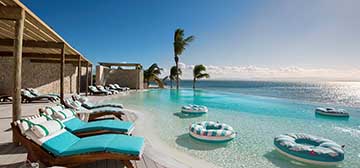
Miavana Villas
- Miavana Private Island, MadagascarStrung out along the private island, every Villa has direct access to the white sandy beaches, turquoise water and coral reefs.

Madagascar has been isolated from the African landmass for approximately 165 million years and its flora and fauna evolved in isolation from that time onwards. The island is one of the world's most biologically diverse areas, and is internationally renowned as a wildlife tourism and ecotourism destination, focusing on lemurs, birds, and orchids. More than half of the island's breeding birds are endemic.
Madagascar has two official languages, first is French and second Malagasy. It is the fourth largest island in the world. Having developed in isolation, the island nation is famed for its unique wildlife.
As a result of the island's long isolation from neighboring continents, Madagascar is home to an abundance of plants and animals found nowhere else on Earth. Approximately 90 percent of all plant and animal species found in Madagascar are endemic, including the lemurs (a type of strepsirrhine primate), the carnivorous fossa and many birds. Unique to the island are more than 50 types of lemurs, 99% of its frog species, and 36 genera of birds. Madagascar houses 100% of the world's lemurs, half of its chameleon species, and 6% of its frogs (though none of its toads).
The most pleasant time to travel to Madagascar, with cooler temperatures and little rain
The rainforested Eastern and Northern parts of the country are hit by tropical storms. Temperatures are around 30 degrees Celsius/86 degrees Farenheit.